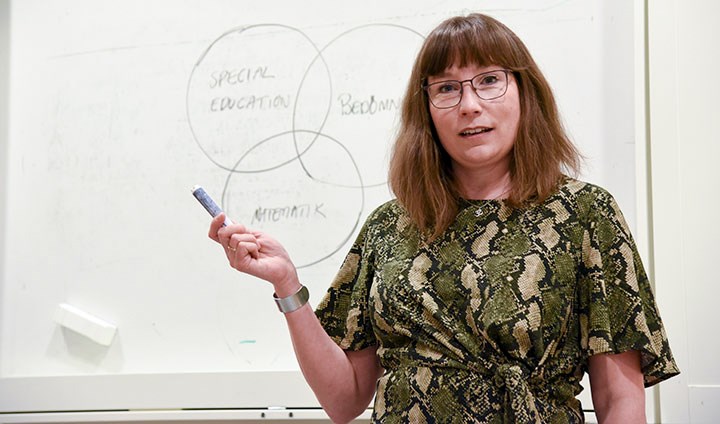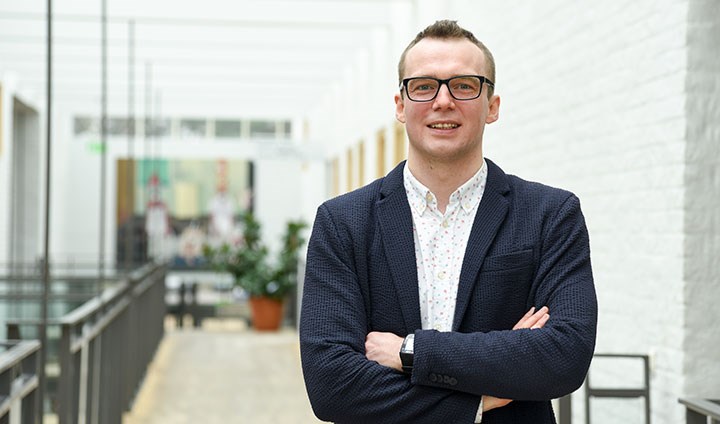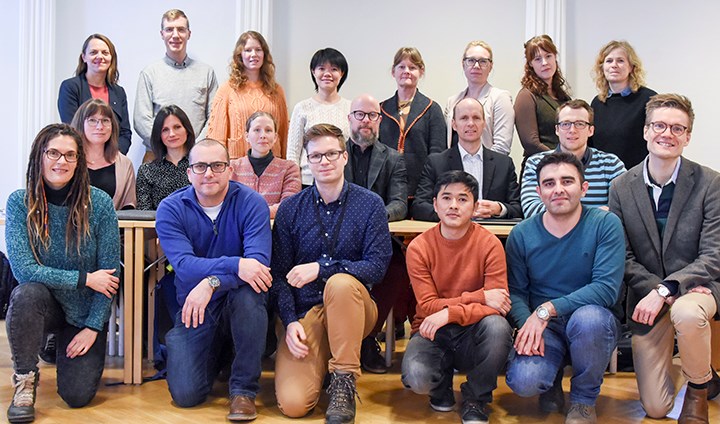High hopes for junior researchers in new initiative

Anette Bagger wants to know how to create the best possible test situation to help children demonstrate what they know.
“You are the research leaders of the future,” said Vice-Chancellor Johan Schnürer, welcoming the new associate senior lecturers to Örebro University. Andrii Dmytryshyn and Anette Bagger are two of the 20 researchers that are part of this special scheme.
“This is the second time we launch this kind of initiative. Recruiting senior researchers is difficult, which is why the university has opted to invest in researchers who have more recently embarked on their research careers,” says Johan Schnürer.
Expectations on the associate senior lecturers are high and extra support is available to them in the shape of a two-year development programme.
“They come from a number of different countries and have been recruited to various disciplines and schools at our university. We know from previous experience, that not only will they benefit from the development programme, they will also benefit from each other,” says Johan Schnürer.
Long journey to get here
One of the new lecturers arrived in Örebro in January. Most recently based at Umeå University, Andrii Dmytryshyn can look back on a much longer journey – which began already at the age of fourteen.

That is when he left home in western Ukraine to move to Kyiv, as he had been accepted to a boarding school for studies in mathematics, physics and computer science. His journey continued via one of Kyiv’s leading universities to Europe – to Italy and France to be precise. After completing a double degree at the Master’s level, he journeyed north to Umeå.
“For my first visit, I left France and 15 degrees and touched down in Umeå and a temperature of 25 degrees below zero,” remembers Andrii Dmytryshyn.
Accepted despite the cold
Despite the cold, he accepted the offer of a place on the PhD programme there and began his research on matrices and eigenvalue problems. This research can be applied, for example, when computing stability and reliability.
“When not done correctly, things go wrong – like with the Millennium Bridge in London. It opened in June 2000, but had to close the same day. It turned out that the bridge started swaying as people were walking across. The frequency of the pedestrians’ steps synchronised with the vibrations in the bridge and made things worse.”
Andrii works on mathematical solutions to replace large matrices with smaller ones, without the loss of important data, but also to facilitate correct computations despite having to limit the number of decimals.
“The fields of applications are everywhere – bridges, high-speed trains and buildings. And the engineers behind the Millennium Bridge are not the only ones that have made computation errors.”
Calculations a shared interest
Calculation is an interest Andrii shares with Anette Bagger – also from Umeå University. A special education teacher, her research spans three areas: assessment, mathematics and special education.
She had no plans on going into research but she was keen to find out what schools and the National Agency for Special Needs Education and Schools (SPSM) needed to do for pupils to smooth the implementation of the new national tests in year 3.
“My driving force is to help people grow. I want to know how we can create the best possible test situation for children to help them demonstrate their knowledge. As a researcher, I have been given the opportunity to look into this,” says Anette Bagger.
Several of the findings during her PhD project surprised Anette:
“It is not unusual for children to think that they have to repeat third grade based on their national test results. And the children are not the only ones who worry. One mum cried tears of relief when she realised her girl got to continue to year 4.”
Shame and feelings of inadequacy
“Many children are incredibly nervous. ‘I feel like I’m having a heart attack,’ says one pupil in my study. They are worried about having to feel ashamed afterwards, once their friends find out how inadequate they are.”
After completing her PhD at Umeå University, she continued her work at SPSM’s research and development unit before returning to Umeå University.
In Örebro, she will continue within the same field. A greater focus will be on teachers but she will also follow the digitisation of the national tests.
“This is exciting. Perhaps digitisation will be a good thing for the children already using assistive devices – perhaps they will be at an advantage for a change.”
Several reasons persuaded Andrii and Anette to apply for the jobs in Örebro: the interdisciplinary approach; belonging to a group of researchers spanning all parts of the university; and getting to spend 70 per cent of their working hours on research.
“There is a high degree of trust and high hopes that we will deliver,” says Anette Bagger.
“It is highly motivating belonging to a group and that we are working towards the same goals,” says Andrii Dmytryshyn.

Text och photo: Linda Harradine
Translation: Charlotta Hambre-Knight
The associate senior lectures follow a two-year development programme. Initially, the programme explores what you need to know to develop into a future research leader. Communication and grant applications are two areas also included already in the first year. Academic leadership runs like a silver thread through the entire programme and is on the agenda for every meeting.
The position as an associate senior lecturer includes research of 70-75 per cent of the post holder’s total working hours, with 25-30 per cent to be spent on teaching. The posts are fixed-term (4-6 years) but if predetermined requirements are met, an associate senior lecturer may be promoted to a permanent position as a senior lecturer.
Read more about the associate senior lecturers:
Davood Khodadad
Matilda Marshall
Yuli Liang
Valeria Varea
Cecilia Pettersson
Hanna Edebol-Carlman
Ajay Pradhan
